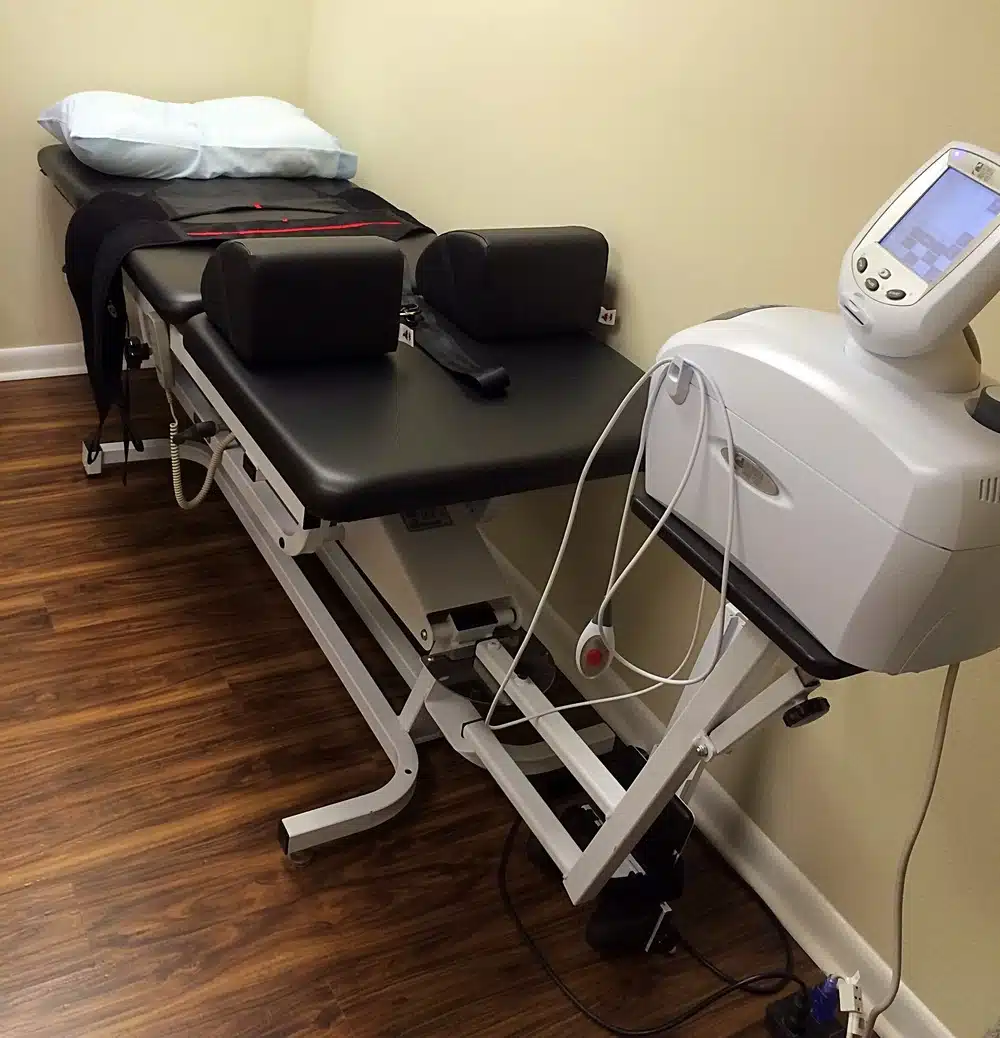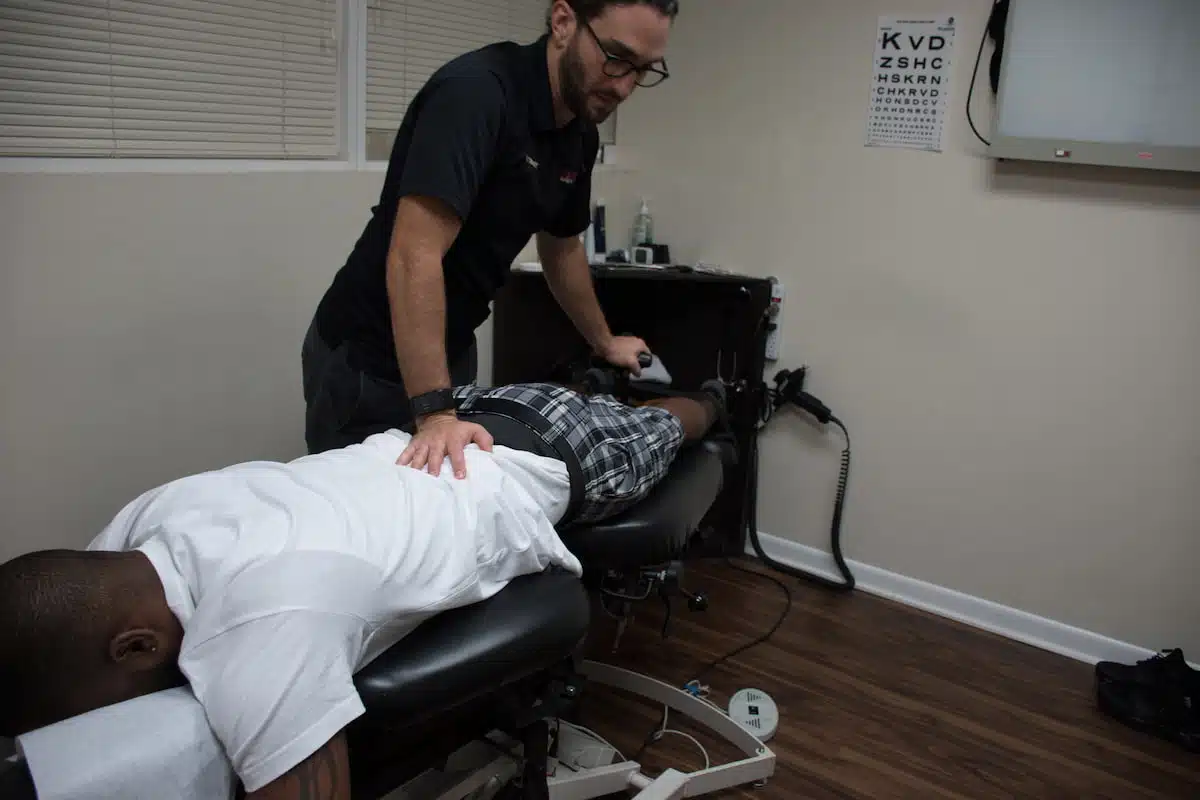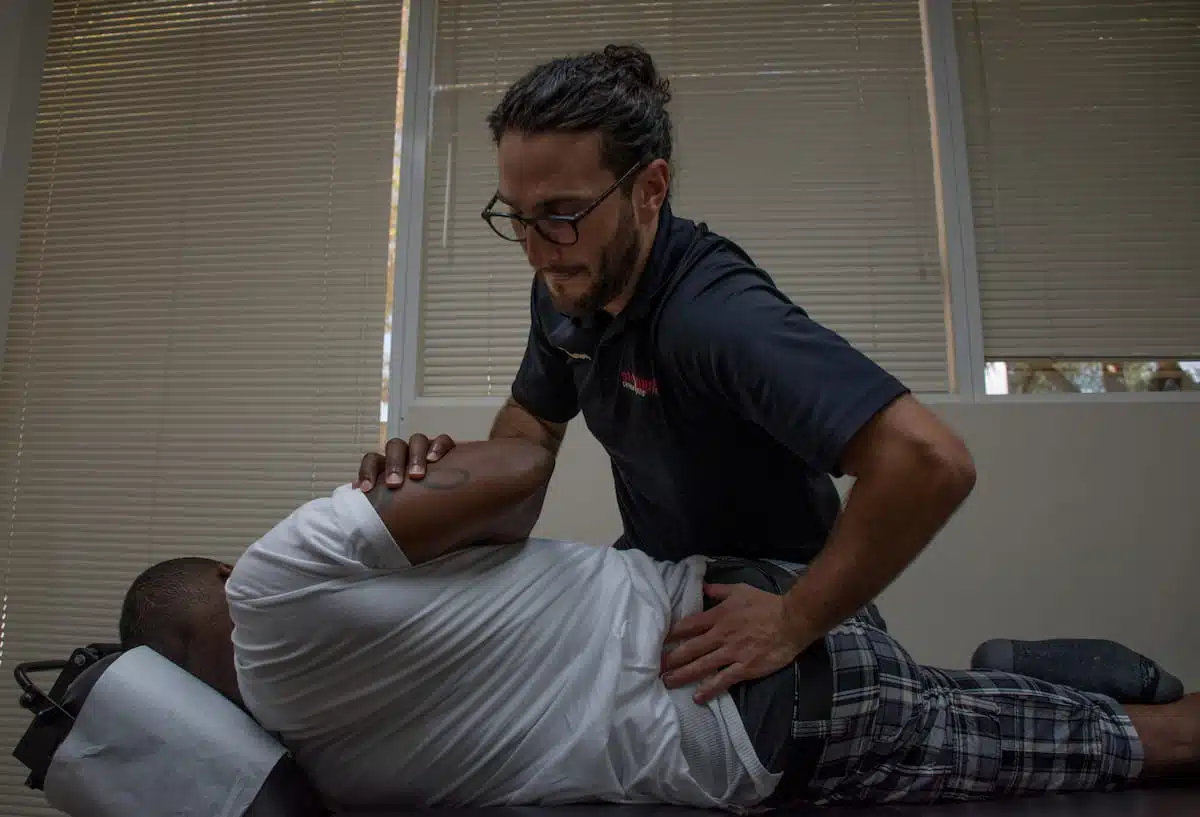Spinal Decompression in Plantation
Spinal decompression is a specialized technique designed to alleviate pressure and compression on the spinal discs, relieving individuals dealing with herniated discs, bulging discs, sciatica, and spinal stenosis.
This cutting-edge therapy aims to gently stretch and realign the spine, creating space between the vertebrae and promoting natural healing. By restoring the health and alignment of the spine, spinal decompression can effectively address the root causes of back pain and offer enduring relief.
If you are ready to bid farewell to back pain and embrace a life of relief and vitality, consider the path of spinal decompression with us. We invite you to discover this innovative therapy's potential for your well-being.
Take the first step towards a pain-free future, and trust us to be your partner in achieving optimal spinal health. Your journey to a revitalized back begins with us, and we are excited to be a part of it!
What is Spinal Decompression?
At its core, spinal decompression is a comprehensive and innovative approach designed to alleviate pressure and tension within the spinal discs. This therapeutic marvel aims to create space between the vertebrae, allowing the spine to breathe freely and restore its natural alignment.
By creating a source of negative pressure, spinal decompression encourages injured or degenerated discs to heal and reduces the burden on pinched nerves. The result? Unlocked relief and the potential for a pain-free and vibrant back, inviting you to embrace life with renewed energy and joy.

The Principle Behind Spinal Decompression Therapy
By gently elongating the spine, we reduce the compressive forces that burden the discs, providing respite for conditions such as herniated discs, bulging discs, sciatica, and spinal stenosis.
Patient undergoing Spinal decompression therapy in a chiropractic facility
Spinal decompression is a gentle and non-invasive therapy that aims to ease the burden on the spinal discs and alleviate discomfort caused by herniated discs, bulging discs, sciatica, and spinal stenosis. This therapy reduces the compressive forces within the spine through targeted stretching and decompression, creating an environment conducive to healing and revitalization.
The target for spinal decompression focuses on its principle of creating a harmonious environment within the spine. By gently elongating the spinal column, this therapy lessens the pressure on the discs, promoting nutrient-rich fluid flow and allowing damaged tissues to heal. As the spine regains its natural alignment, the body's innate healing powers are unleashed, paving the way to a pain-free and vibrant life.
Imagine your spine as an intricate tapestry, each thread contributing to your body's harmony and mobility. Now, envision the joy of experiencing this harmony as spinal decompression provides relief and support to your spine, revitalizing your back and restoring balance.

Conditions Treated
The principle behind spinal decompression therapy is to create negative pressure within the spinal discs, allowing them to decompress and rehydrate. This, in turn, promotes the healing of injured or degenerated discs and reduces stress on the nerves.
Let's explore the enchanting world of spinal decompression and discover the specific conditions it can treat:
Disc Bulges
Spinal decompression gently reduces pressure on the spinal discs, allowing bulging discs to retract and relieve nerve compression. By creating space between the vertebrae, this therapy encourages the discs to return to their natural position.
Degenerative Disc Disease
This innovative therapy facilitates nutrient-rich fluid flow to degenerating discs, encouraging healing and slowing the disease's progression. Improving disc hydration and nutrition helps revitalize the discs and reduce pain caused by degeneration.
Sciatica
Spinal decompression alleviates the pressure on the sciatic nerve, reducing pain and inflammation associated with sciatica. The gentle stretching and decompression of the spine can relieve the radiating pain down the leg.
Spondylosis
The therapy's gentle approach supports the management of spondylosis by creating space between the vertebrae, lessening joint strain. It can help reduce pain and improve joint mobility in individuals with spondylosis.
Spinal Stenosis
Spinal decompression therapy promotes the expansion of the spinal canal, relieving those suffering from spinal stenosis. Creating more space for the nerves helps reduce pain and improve functional ability.
Foraminal Encroachment
By gently stretching the spine, the therapy relieves pressure on the nerve roots, addressing foraminal encroachment. This can help alleviate pain and improve nerve function in individuals with this condition.
Our Approach To Spinal Decompression
Each patient undergoes a comprehensive evaluation to determine the most suitable treatment plan tailored to their unique needs. We understand that no two spines are alike, so our approach is personalized and precise.
To enhance results, we may integrate other modalities into the treatment, complementing the benefits of spinal decompression. Our highly trained professionals are dedicated to ensuring your comfort throughout the procedure, guiding you through each step with care and expertise. As we prioritize your safety, you can trust that our state-of-the-art equipment and techniques adhere to the highest standards.
Our clinic's friendly, fun, and caring environment is essential for healing. Our team is educated in the latest advancements and genuinely passionate about your well-being.
So, whether you're seeking relief from disc bulges, herniations, or other back issues, you can count on us to deliver outstanding results while supporting you every step. Let us be your partner on the journey to a pain-free and vibrant life.

Benefits of Spinal Decompression
Experience the remarkable benefits of spinal decompression and unlock a world of relief for individuals with certain conditions or back problems. Our specialized approach offers many advantages that will leave you feeling revitalized and pain-free. Discover the benefits of spinal decompression:
- Alleviation of Back and Neck Pain
- Non-Invasive and Non-Surgical Treatment Options
- Reduced Pressure on Spinal Discs and Nerves
- Increased Spinal Flexibility and Mobility
- Improved Blood Flow and Nutrient Delivery to Discs
- Enhanced Disc Healing and Regeneration
- Minimized Reliance on Pain Medication
- Avoidance of Potential Surgery and its Risks
- Quick Recovery and Minimal Downtime
- Long-term Relief from Chronic Spinal Conditions
Embrace the beauty of a non-invasive and non-surgical treatment option, sparing you the stress of surgery and its potential risks. With reduced pressure on spinal discs and nerves, you can enjoy increased spinal flexibility and mobility, allowing you to move quickly and easily. Feel the difference as blood flow and nutrient delivery to your discs improve, enhancing disc healing and regeneration.
Revel in the freedom from relying on pain medication, as spinal decompression targets the root cause of your pain. Experience quick recovery and minimal downtime, so you can swiftly return to the activities you love. Our approach offers long-term relief from chronic spinal conditions, sparing you from unnecessary suffering.

Why Choose Stumpff Chiropractic For an Unparalleled Service?
Discover the unparalleled advantages of choosing Stumpff Chiropractic as your trusted provider of spinal decompression in Plantation services. Our commitment to excellence and patient satisfaction sets us apart, ensuring you receive the utmost care and results you deserve. Here's why you should choose Stumpff Chiropractic:
Experience and Expertise
At Stumpff Chiropractic, you'll find a team of professionals with extensive experience and expertise in chiropractic care. Our chiropractors have undergone specialized training and certifications in spinal decompression, guaranteeing you receive top-notch treatment from knowledgeable hands.
State-of-the-Art Facility
Step into our state-of-the-art clinic equipped with advanced equipment and cutting-edge technology for spinal decompression therapy. Rest assured that you'll experience the most modern and effective techniques to address your back problems with precision and care.
Personalized Treatment Plans
We believe no two patients are the same; thus, our approach revolves around personalized treatment plans. We take the time to assess your specific needs and conditions, tailoring each therapy session to ensure optimal results for your unique case.
Patient-Centered Care
Your well-being is our top priority, and we strive to provide patient-centered care that encompasses compassion and attentiveness. Throughout your treatment journey, you'll experience a warm and caring environment supported by our dedicated team every step of the way.
Make the empowering choice of entrusting your spinal health to Stumpff Chiropractic. Our friendly, reliable, and professional team is eager to guide you toward a pain-free and fulfilling life. Embrace the journey of transformation with us, and together, we'll pave the path to your improved spinal health and overall well-being.
In the journey towards a healthier and pain-free life, non-surgical spinal decompression emerges as a beacon of hope for individuals with certain conditions or back problems.
We understand the profound impact that spinal health has on your overall well-being. With our advanced spinal decompression therapy, you can unlock a world of benefits that lead to a better quality of life.
Revel in the advantages of non-surgical spinal decompression, where gentle yet effective techniques alleviate pressure on spinal discs and nerves, promoting improved flexibility and mobility.
Experience the power of increased blood flow and nutrient delivery to discs, fostering enhanced healing and regeneration. Embrace the relief from chronic spinal conditions, freeing yourself from the dependence on pain medication and steering clear of potential surgery risks.
The path to renewed vitality starts with you taking the first step toward our caring and professional spinal decompression services. Embrace the opportunity to reclaim your life from back problems and embark on a journey of transformation with Stumpff Chiropractic.
We are grateful for considering our services for your spinal health needs. Our friendly and knowledgeable team eagerly awaits to guide you toward a life filled with comfort, joy, and well-being. Together, let us unlock the possibilities of non-surgical spinal decompression in Plantation. Contact us now!
